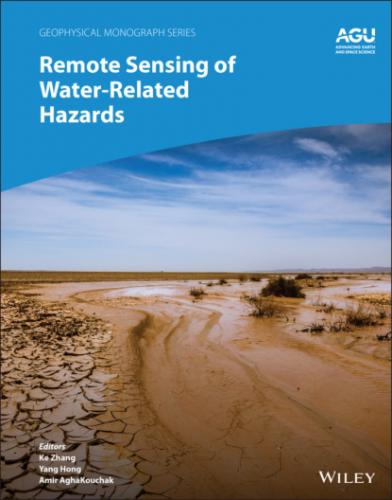ACKNOWLEDGMENTS
We appreciate the extensive efforts by the developers of the ground, satellite, and reanalysis precipitation datasets to make their products available. The study is funded by the Global Water Futures program in Canada, the National Natural Science Foundation of China (grant 71461010701 and 41471430), and the National Key R&D Program of China (2018YFC1508105).
REFERENCES
1 Alemohammad, S. H., McColl, K. A., Konings, A. G., Entekhabi, D., & Stoffelen, A. (2015). Characterization of precipitation product errors across the United States using multiplicative triple collocation. Hydrology and Earth System Sciences, 19(8), 3489–3503. https://doi.org/10.5194/hess‐19‐3489‐2015
2 Ashouri, H., Hsu, K.‐L., Sorooshian, S., Braithwaite, D. K., Knapp, K. R., Cecil, L. D., et al. (2015). PERSIANN‐CDR: Daily precipitation climate data record from multisatellite observations for hydrological and climate studies. Bulletin of the American Meteorological Society, 96(1), 69–83. https://doi.org/10.1175/bams‐d‐13‐00068.1
3 Behrangi, A., Yin, X., Rajagopal, S., Stampoulis, D., & Ye, H. (2018). On distinguishing snowfall from rainfall using near‐surface atmospheric information: Comparative analysis, uncertainties, and hydrologic importance. Quarterly Journal of the Royal Meteorological Society. https://doi.org/10.1002/qj.3240
4 Chen C.‐Y., Liou W.‐Z., & Hsu C.‐H. (2017). A Rainfall‐based Warning Model for Predicting Landslides Using QPESUMS Rainfall Data. Retrieved from https://ir.lib.nchu.edu.tw/handle/11455/97403
5 Ciabatta, L., Brocca, L., Massari, C., Moramarco, T., Puca, S., Rinollo, A., et al. (2015). Integration of satellite soil moisture and rainfall observations over the Italian territory. Journal of Hydrometeorology, 16(3), 1341–1355. https://doi.org/10.1175/jhm‐d‐14‐0108.1
6 Clark, R. A., Gourley, J. J., Flamig, Z. L., Hong, Y., & Clark, E. (2014). CONUS‐wide evaluation of National Weather Service flash flood guidance products. Weather and Forecasting, 29(2), 377–392.
7 Dee, D. P., Uppala, S. M., Simmons, A. J., Berrisford, P., Poli, P., Kobayashi, S., et al. (2011). The ERA‐Interim reanalysis: Configuration and performance of the data assimilation system. Quarterly Journal of the Royal Meteorological Society, 137(656), 553–597. https://doi.org/10.1002/qj.828
8 Funk, C., Peterson, P., Landsfeld, M., Pedreros, D., Verdin, J., Shukla, S., et al. (2015). The climate hazards infrared precipitation with stations: A new environmental record for monitoring extremes. Scientific Data, 2, 150066. https://doi.org/10.1038/sdata.2015.66
9 Gelaro, R., McCarty, W., Suárez, M. J., Todling, R., Molod, A., Takacs, L., et al. (2017). The Modern‐Era Retrospective Analysis for Research and Applications, Version 2 (MERRA‐2). Journal of Climate, 30(14), 5419–5454. https://doi.org/10.1175/jcli‐d‐16‐0758.1
10 Gourley, J. J., Flamig, Z. L., Vergara, H., Kirstetter, P.‐E., Clark III, R. A., Argyle, E., et al. (2017). The FLASH Project: Improving the tools for flash flood monitoring and prediction across the United States. Bulletin of the American Meteorological Society, 98(2), 361–372.
11 Guo, L., He, B., Ma, M., Chang, Q., Li, Q., Zhang, K., & Hong, Y. (2018). A comprehensive flash flood defense system in China: Overview, achievements, and outlook. Natural Hazards, 92(2), 727–740.
12 Gupta, H. V., Kling, H., Yilmaz, K. K., & Martinez, G. F. (2009). Decomposition of the mean squared error and NSE performance criteria: Implications for improving hydrological modelling. Journal of Hydrology, 377(1–2), 80–91.
13 Hersbach, H., Bell, B., Berrisford, P., Hirahara, S., Horányi, A., Muñoz‐Sabater, J., et al. (2020). The ERA5 global reanalysis. Quarterly Journal of the Royal Meteorological Society, 146(730), 1999–2049. https://doi.org/10.1002/qj.3803
14 Hong, Y., Hsu, K. L., Sorooshian, S., & Gao, X. G. (2004). Precipitation estimation from remotely sensed imagery using an artificial
